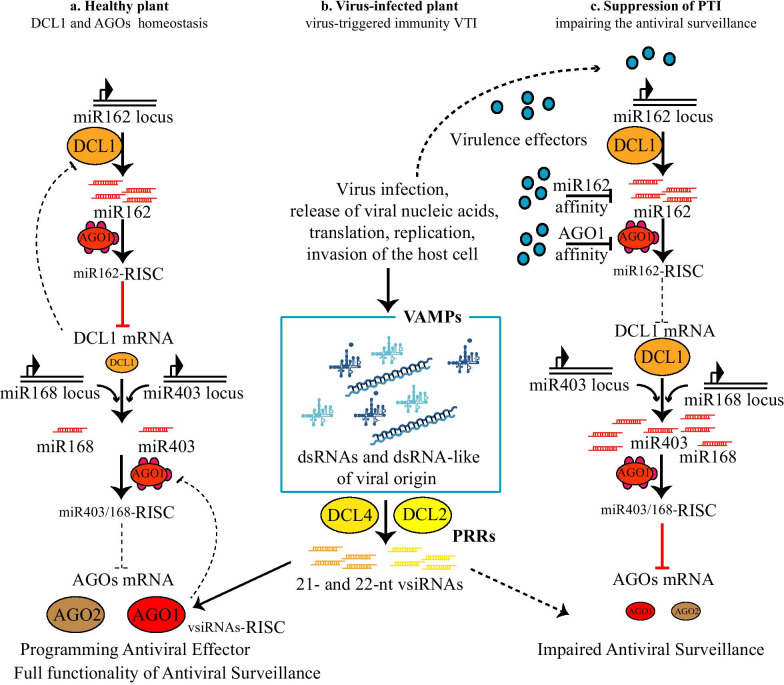Fig. 2.
Schematic representation of miRNA-mediated regulation of antiviral DCLs and the action of virulence effectors. a In healthy plants, miR168 and miR403 regulate, at post-transcriptional level, the expression of Argonaute 1 and 2 (AGO1 and 2), respectively. miR168 and miR403 are processed by Dicer-like 1 (DCL1), which is, in turn, regulated at post-transcriptional levels by miR162. b Upon infection, VAMPs are perceived, and processed by the main antiviral DCLs, i.e., DCL2 and DCL4, into 22- and 21-nucleotide (nt) long virus-derived small-interfering RNAs (vsiRNAs). vsiRNAs can program AGO1 and 2, which thus assemble RISCs mediating full antiviral surveillance. c During viral infection, virulence effectors can alter homeostasis of DCL1, and in turn, of AGOs, mainly by sequestering miRNAs. This results in a suppression of PTI and AGO-mediated antiviral surveillance. Relative size of the elliptic symbols representing AGOs or DCLs are indicative of up/down regulation. Arrows indicate positive regulation and blunt-ended bars indicate inhibition. Black blunt-ended end bars indicate a virus effector affinity for siRNAs or for RISC. Dashed blunt-ended bars indicate mild inhibition compared to solid red lines

